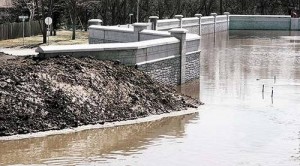
Richland-Wilkin Joint Powers Authority
Original Publication Date:
April 4, 2013
Wahpeton Daily News
Republished with permission from:
Trana Rogne, Board Member of the MnDak Upstream Coalition.
If Fargo doesn’t get its diversion, will the Red River Valley stop functioning?
What if the North Dakota Legislature says we don’t want to put the taxpayers of the state on the hook for a gargantuan project without a realistic budget?
Will Fargo face a wall of water running down its streets if the gavel falls against them?
The answer is no. The city may in fact get protection from floods sooner, rather than later. There are alternatives that other cities have used that allow people and water to coexist in a safe and beneficial environment. Fargo has begun the most important step – building dikes and levees to protect up to 42.5 feet, nearly two feet above the highest flood in recorded history. The legislature should tell them to use $100 million of state money for that protection.
Moorhead has essentially completed their protection. Little mention was made of the announcement by Moorhead, Fargo’s sister city, that a flood this spring would be a non-event because they had built their dikes to 44 feet.
But Fargo leaders cry that dikes are not enough. How can they protect their future development area south of town if they can’t get a diversion? The obvious alternative is to stop building in the natural flood plain. Their diversion solution was to push the flood plain on those south of town with a dam and reservoir, so Fargo could make their city bigger.
It’s time to take basinwide retention seriously as a way to manage water in the natural floodplain. It’s a long-term commitment. It may take 50 years to reduce the river levels by two feet. But it can be done. We have been addressing flooding with outdated piecemeal solutions, city by city. Some retention projects have been completed, such as the North Ottawa Project in the Bois de Sioux Watershed in Minnesota. The Red River Basin Commission and the Red River Retention Authority are working with various state and local agencies to plan new projects. Flood risk reduction for the whole Red River Basin is in progress.
This progress, however, has been placed in jeopardy by parochial interests who, by their own admission, want to protect themselves and not others. There is no affordable or reasonable “silver bullet” for flood protection in a floodplain. There are pieces of solutions that need to be organized into a mosaic of benefit for the entire region. It’s time to take the name tags off and work together for the common good.
Views: 75